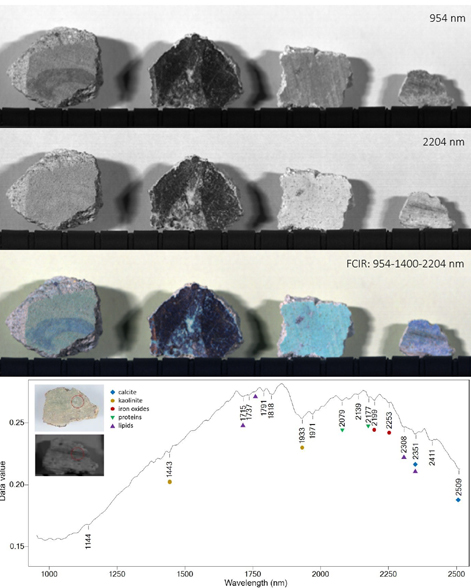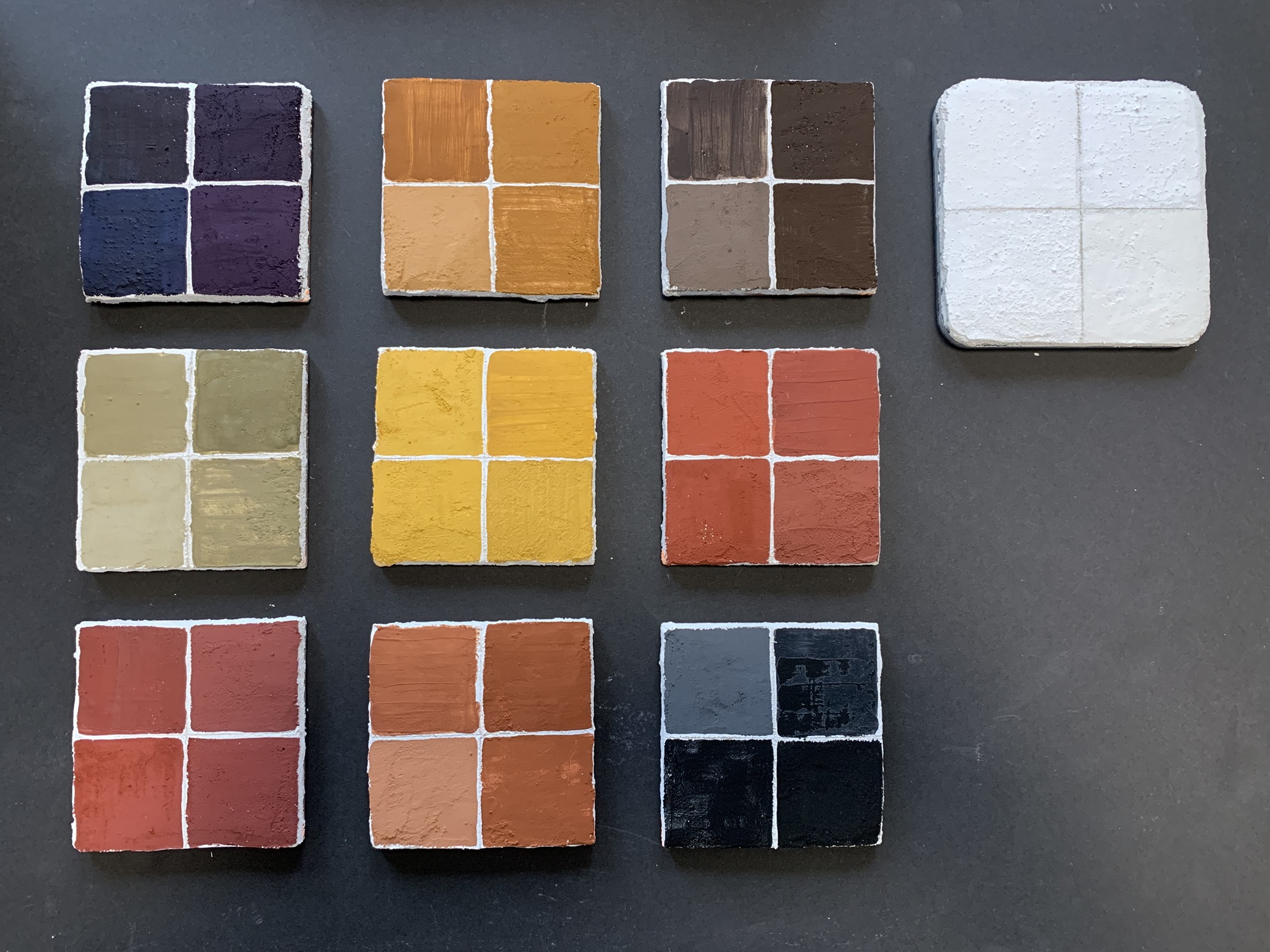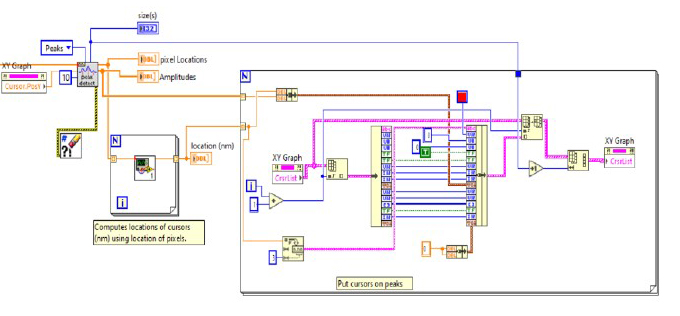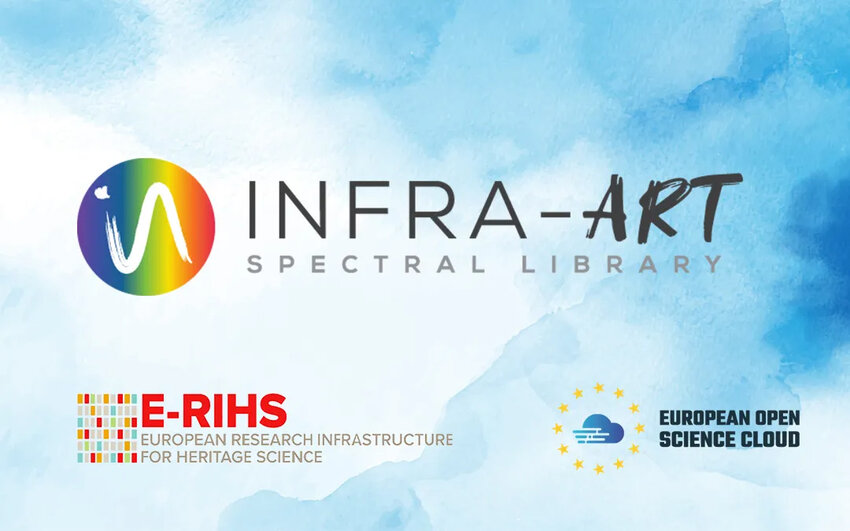Project results
An overview of the main data, reports, deliverables, and any other know-how developed or produced in the course of the activities performed within the artMAP project.
Final Project Summary Report
PROJECT SUMMARY
The most significant outcome of the artMAP project is the development of a new analytical methodology capable of assessing the presence, nature, and distribution of organic binders used in ancient wall paintings. The proposed analytical procedure, registered as an invention, combines Laser Induced Fluorescence (LIF), hyperspectral imaging, and Fourier Transform Infrared spectroscopy (FTIR), in a specific sequence of steps, each designed to refine the previously obtained results and increase the level of information about the nature and distribution of the present organic compounds. This newly developed methodology was tested under laboratory conditions, reaching a technology readiness level (TRL) of 4. The results obtained so far on wall painting replicas and archaeological Roman-age wall painting fragments, led to promising results. As shown by the registered datasets, the level of information obtained regarding the nature of organic binders and the accuracy of the distribution maps, are strongly influenced by the pigment-binder interactions as well as by the degree of carbonation. We believe that the developed methodology provides a solid foundation for continuing research and achieving new results. Additionally, the methodology can be applied to other artworks facing challenges in the identification and characterization of organic compounds, such as rock art. The artMAP project has been recognized for its innovations and contributions to the heritage science field, receiving two awards – a gold medal and a silver medal, at international invention exhibitions. Upon further optimization, the newly developed methodology will be incorporated into the E-RIHS RO service catalog offered by CERTO INOE within the EERTIS platform.
KEY DELIVERABLES OBTAINED











PHASE 3 OF THE PROJECT | JAN - SEP 2024
Summary report
According to the implementation plan, the final stage of the artMAP project included three main activities. The primary goal of this stage was to develop and implement a new analytical methodology capable of detecting, identifying, and mapping organic binders in ancient wall paintings. The key outcomes of this stage include: (1) the development of an enhanced FTIR method using solvent extraction, and (2) the testing and optimization of the newly developed analytical methodology (patent application submitted) on both lab samples and a large group of Roman-era archaeological wall painting fragments.

Enhanced FTIR method using solvent extraction
An enhanced FTIR procedure for the analysis of organic compounds in ancient wall paintings was developed. This refined method involves extraction of the pulverized paint powder samples with polar and nonpolar solvents, and was designed to be as simplified and efficient as possible. In developing the methodology, particular attention was given to existing literature, assessing the difficulty of preparation and treatment stages, associated costs (materials, human resources, time), and environmental impact. In line with EU directives promoting the use of safe, sustainable chemicals with minimal environmental impact, a simplified protocol was adopted. This protocol employs dichloromethane, based on a method originally proposed by Cerrato et al. (Microchem. J. 168, 2021), along with distilled water.
Development and testing of the new analytical methodology on lab samples
In line with the main objective of the artMAP project, an innovative analytical methodology was developed for the in-situ detection, identification, and mapping of organic binders in ancient murals using non-contact and non-destructive techniques. The initial methodology proposed a two-step approach combining two complementary molecular techniques – LIF and FTIR spectroscopy. Based on experimental lab results, an additional step using hyperspectral imaging was incorporated, providing further information on the distribution of organic compounds. This newly developed methodology, registered as a patent (application no. A00517/09.09.2024), consists of a cascade of steps, each refining previous results and increasing the level of detail about the nature and distribution of organic compounds. This three-step analytic approach was tested and optimized on lab samples including wall painting replicas. The obtained results are presented and discussed in an upcoming publication.


Testing and evaluation of the new analytical methodology on archaeological samples
The newly developed methodology was tested and evaluated on a series of Roman-era wall painting fragments (2nd-3rd century AD) excavated at Sarmizegetusa. In terms of painting technique, for some of the investigated samples we were able to identify and map the distribution of an organic binder, an animal glue, used for finishing the superimposed paint layers. Some of the key results obtained so far from the Sarmizegetusa fragments have been published in the journal Heritage, within the special issue dedicated to the artMAP project – I.M. Cortea et al. (2024) New insights into the materials and painting techniques of ancient wall paintings from the Roman province of Dacia: a minimally-invasive multi-method approach.
Phase 3 |
Progress report






PHASE 2 OF THE PROJECT | JAN - Dec 2023
Summary report
The key outcomes of this second stage of the project include (1) completion of the new LIF experimental setup, (2) development of a new software interface and (3) design and development of a specialized LIF database. With the completion of this stage, the first two objectives of the artMAP project have been achieved.
The new software interface
Building on the requirements set in the project’s first phase, a user-friendly software interface has been developed, tested and optimized. The application, developed in LabVIEW (Laboratory Virtual Instrument Engineering Workbench), allows for the acquisition of spectral data and the generation of 2D scanning maps. The scanning module of the application is in the final stage of development, with completion and optimization expected early next year.


Wall painting replicas
A series of wall paiting replicas were produced (both a fresco as well as a secco) – a combination of a lime-based substrate and a variety of painting materials. Each replica was composed of four sectors painted with three variable parameters: pigments, binders, and phase of application. The selected painting materials cover a wide range of organic binders and mineral pigments, commonly found in ancient mural paintings.
Development of a LIF spectral library
Over 50 reference samples were investigated via LIF spectroscopy, with the 266 nm laser excitation wavelength. In accordance with the FAIR guiding principles, all reference LIF spectra acquired by the end of the project will be integrated into the INFRA-ART Spectral Library, an open-access database of art-related materials.
Phase 2 |
Progress report





PHASE 1 OF THE PROJECT | Jul - Dec 2022
Summary report
The specific objectives of the first phase of the artMAP project were the upgrade of the existing LIF scanning system with a new laser source and the development of a new software interface. According to the working plan, within this first stage of the project, three tasks were carried out. The main results of this stage include (1) the design and development of the new LIF system, (2) the upgrade and preliminary testing of the new experimental LIF set-up (3), and the design of the new LIF software interface.

The new laser system
An ultra-compact, rugged, Q-Switched Nd:YAG Nano S laser from Litron was purchased. The Nano S laser is one of the smallest ‘end user’ laser system available on the market that offers flexibility to access all the wavelengths from 1064nm to 266nm by removing and re-combining the appropriate modular harmonic generation units. A motorized optical attenuator included within the configuration allows the user to vary the pulse energy remotely while also maintaining the temporal and spatial profiles of the beam. Our system was configured with a stable resonator that allows the user to alter parameters such as input energy and repetition rate with very little variation in beam quality.
Outline of the new scanning system
The LIF experimental set-up will be updated with a new scanning system. In place of the old two stepper motors which together weigh almost 4kg and use a single mirror, a very small scan head will be installed which uses two mirrors for scanning and comes with a dedicated control board. This upgrade will also require a different approach in terms of electronic communication with the scanning assembly. The entire optoelectronic architecture will undergo major changes, the goal being to perfectly adapt the LIF scanning system to the new laser unit and, on a secondary level, to miniaturize the LIF system as much as possible.

Design of a new software interface
Following the upgrade of the LIF set-up with a new laser source and with a new scan system, a new software interface compatible with the new architecture is required. The new software application will retain some of the core features of the old LabView interface, but will also include new functions in order to enhance the scanning performance.
Phase 1 |
Progress report






